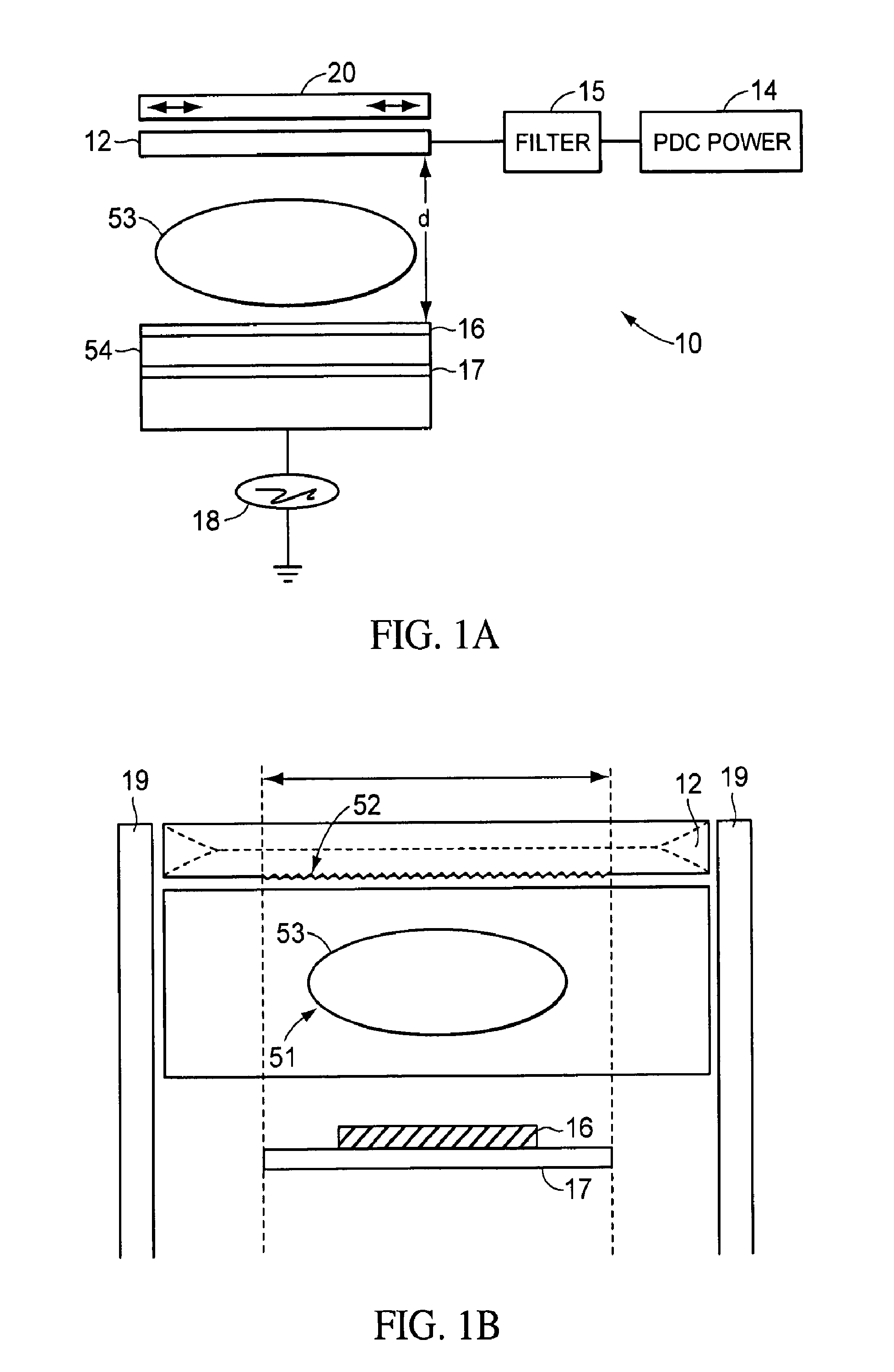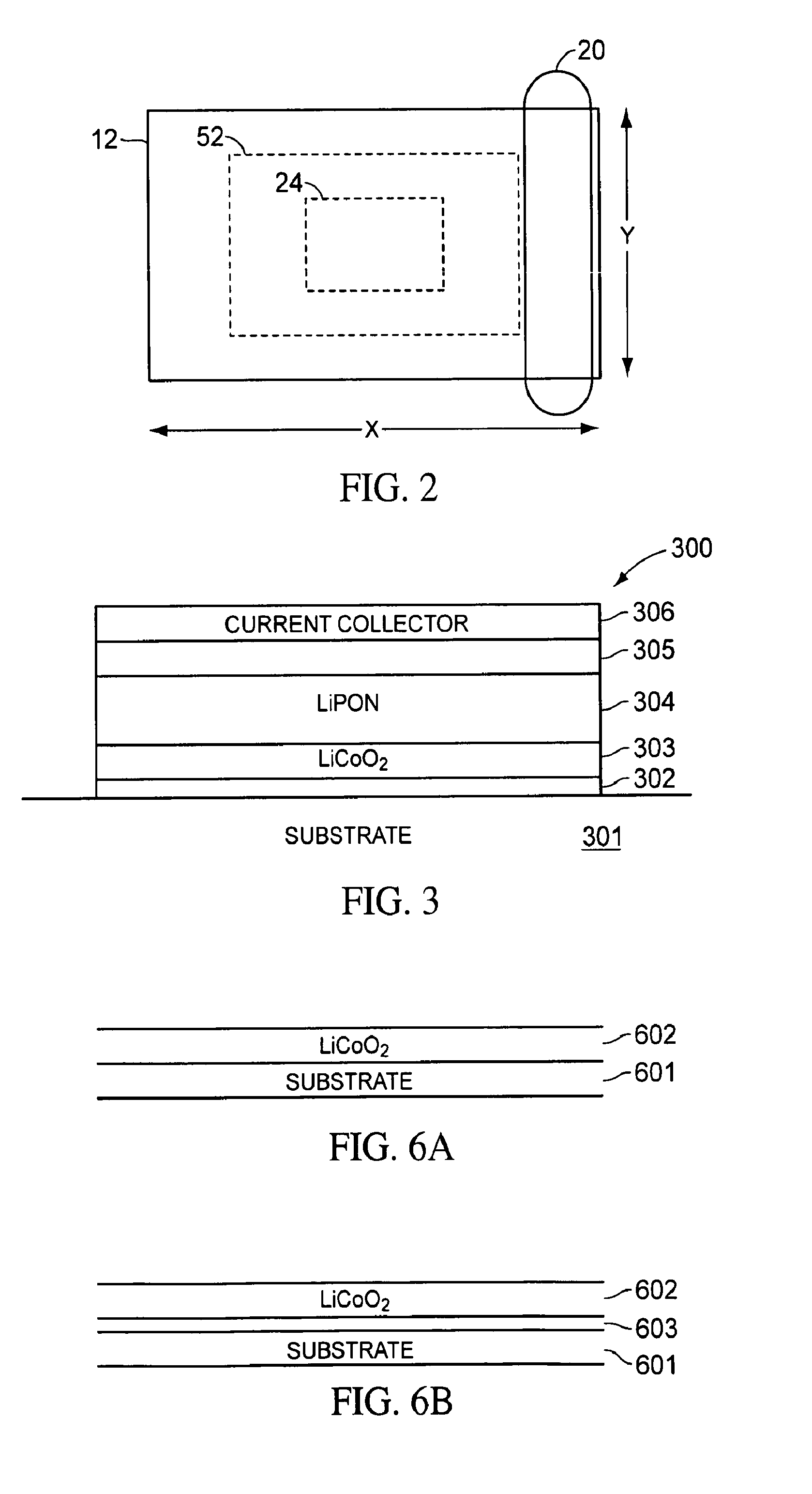Deposition of LiCoO2
a technology of licoo2 and film, applied in the direction of cell components, sustainable manufacturing/processing, cell components, etc., can solve the problems of reducing the yield of such batteries, limiting the choice of substrate materials, and increasing the cost, and achieves a high deposition rate. , the effect of high ra
- Summary
- Abstract
- Description
- Claims
- Application Information
AI Technical Summary
Benefits of technology
Problems solved by technology
Method used
Image
Examples
Embodiment Construction
[0039]In accordance with embodiments of the present invention, LiCoO2 films are deposited on a substrate by a pulsed-dc physical vapor deposition (PVD) process. In contrast to, for example, Kim et al., LiCoO2 films according to some embodiments of the present invention provide a crystalline LiCoO2 film as deposited on a substrate at a substrate temperature as low as about 220° C. during deposition, without the use of a metallic nucleation or barrier underlying film. The as-deposited crystalline LiCoO2 films can be easily ripened to very high crystalline condition by anneal at about 700° C. for as little as 5 minutes without the use of an underlying precious metal film. In addition, the as deposited crystalline films, when positioned on a noble metal film can be annealed at much further reduced temperatures, for example as low as 400 to 500° C., providing for deposition, annealing, and production of solid state batteries on lower temperature substrates.
[0040]In the present applicatio...
PUM
| Property | Measurement | Unit |
|---|---|---|
| temperature | aaaaa | aaaaa |
| temperature | aaaaa | aaaaa |
| resistance | aaaaa | aaaaa |
Abstract
Description
Claims
Application Information
 Login to View More
Login to View More - R&D
- Intellectual Property
- Life Sciences
- Materials
- Tech Scout
- Unparalleled Data Quality
- Higher Quality Content
- 60% Fewer Hallucinations
Browse by: Latest US Patents, China's latest patents, Technical Efficacy Thesaurus, Application Domain, Technology Topic, Popular Technical Reports.
© 2025 PatSnap. All rights reserved.Legal|Privacy policy|Modern Slavery Act Transparency Statement|Sitemap|About US| Contact US: help@patsnap.com



